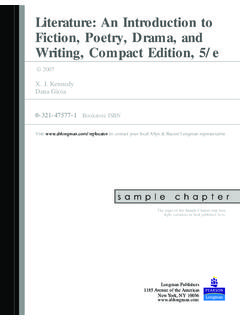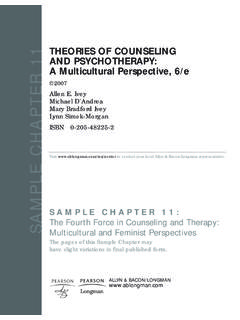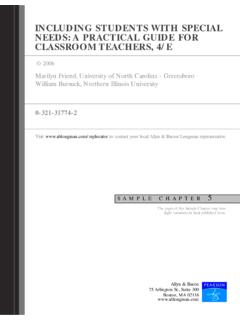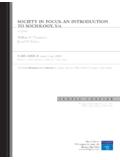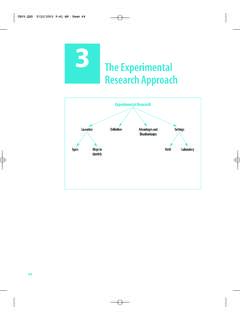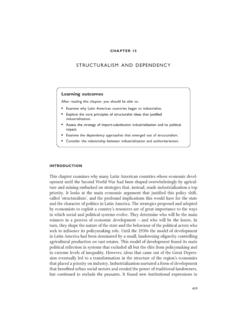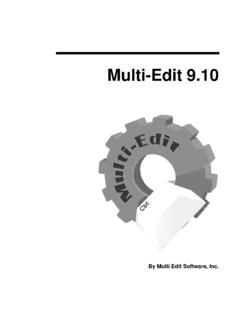Transcription of 9 Conducting Visual Arguments - Higher Education …
1 1659 Conducting VisualArgumentsIn today s visually oriented culture, Arguments increasingly use photographs,drawings, graphics, and innovative page and text design for persuasive effect. Aswe shall see, visuals can enhance the logos, pathos, and ethosof an argument bysupporting or clarifying an argument s logical core, moving audiences imagina-tively and emotionally, or enhancing the writer s credibility and authority. Theycan also substantially enliven a writer s argument, keeping readers hooked andengaged.
2 In this chapter, we ask you to explore with us the enormous rhetoricalpotential of Visual elements in Arguments , particularly the way that Visual andverbal elements can collaborate to achieve persuasive visuals in Arguments also poses challenges. It places on arguers an evengreater burden to understand their audience, to think through the effect visualswill have on that audience, and to make sure that the verbal and Visual parts of anargument work together. Before we examine Visual design, we want to describethree recent examples of both the power and challenge of using visuals.
3 In May 1999, the Makah, a Native American tribe in western Washington state,reinstated its cultural practice of hunting whales. Although guaranteed theright by treaty and by a permit from the International Whaling Commission tohunt and kill four gray whales a year, the Makah encountered vehementprotests from environmental groups and whale lovers. This hostility was fur-ther inflamed by the media coverage that showed the hunting and killing of awhale in detail on national television. To manage angry public response to thefootage of this killing, the Makah called in David Margulies, president of aDallas-based public relations firm.
4 In a newspaper article, Margulies, whilecommenting on this crisis, described the impact of visuals: The picture is al-ways the most powerful element of the story, and One of the first things youwant to do in public relations is control the picture. Whichever side has the better picture very often controls the argument. In an article entitled Sending the Right Message in Art Form, posted on theWeb site of the Humane Society of the United States, the author warns local166 Part TwoPrinciples of ArgumentHumane Society chapters against the careless use in their newsletters of draw-ings and photos that can undermine the organization s goals.
5 To motivate peo-ple to care for their animals responsibly, the article proposes these guidelines:avoid showing any unneutered males or females with litters, dogs with prongcollars or choke chains unless they are in training sessions, unsupervised dogsoutside or cats outdoors, or dogs tied to trees, doghouses, or fences. Photos anddrawings should show all dogs and cats with visible collars and ID tags andshould depict mixed breeds as well as purebreds and mature animals as well asadorable puppies and kittens. In July 2002, Fox News and MSNBC evoked angry responses from the WhiteHouse when they used a split screen to televise President Bush s speech on theeconomy, expanding their stock market tickers to take up most of the screenand reducing the president to a small box.
6 As Bush talked about improvementin the economy, the larger portion of the screen showed stock market numbersfalling. White House spokesman Ari Fleischer called the split-screen approach a troubling new development that sensationalizes and distorts what makesmarkets go up and down. It suggests to viewers that there s a causal connec-tion between a president s speech and minute-by-minute market shifts, whichis a misleading representation.. It s economic nonsense. Each of these instances demonstrates the suggestive power of Visual elementsand the challenge of planning exactly how visuals should function in yourargument.
7 With this background in mind, we turn now to explaining some basic compo-nents of Visual design. We then examine several genres of Visual argument suchas posters and fliers, public affairs advocacy ads, political cartoons, and Webpages. The third section of the chapter explains how you can use Visual elementsin your own Arguments and invites you to create your own poster or advocacyadvertisement. In the final section, we explain how you can display numericaldata graphically for rhetorical Design Elements in Visual ArgumentTo understand how Visual images can produce an argument, you need to under-stand the design elements that work together to create a Visual text.
8 In this sectionwe ll explain and illustrate the four basic components of Visual design: use oftype, use of space and layout, use of color, and use of of TypeType is an important Visual element of written Arguments . Variations in type,such as size, boldface, italics, or all caps, can direct a reader s attention to an argu-ment s structure and highlight main points. In Arguments designed specificallyfor Visual impact, such as posters or advocacy advertisements, type is often usedChapter 9 Conducting Visual Arguments167in eye-catching and meaningful ways.
9 In choosing type, you need to consider thetypeface or font style, the size of the type, and formatting options. The main type-faces or fonts are classified as serif, sans serif, and specialty type. Serif type has lit-tle extensions on the letters. (This text is set in serif type.) Sans serif type lacksthese extensions. Specialty type includes script fonts and special symbols. In addi-tion to font style, type comes in different sizes. It is measured in points, with onepoint equal to 1/72 of an inch. Most text-based Arguments consisting mainly ofbody text are written in ten- to twelve-point type whereas more image-based argu-ments may use a mixture of type sizes that interact with the images for persuasiveeffect.
10 Type can also be formatted using bold, italics, underlining, or shading foremphasis. Table shows examples of type styles, as well as their typical following basic principles for choosing type for Visual Arguments canhelp you achieve your overall goals of readability, Visual appeal, and for Choosing Type for Visual Arguments1. If you are creating a poster or advocacy advertisement, you will need todecide how much of your argument will be displayed in words and howmuch in images. For the text portions, choose display type(sans serif) orspecialty fonts for titles, headings, and slogans andbody or text type(serif)for longer passages of Make type functional and appealing by using only two or three font stylesper Use consistent patterns of type (similar type styles, sizes, and formats)

